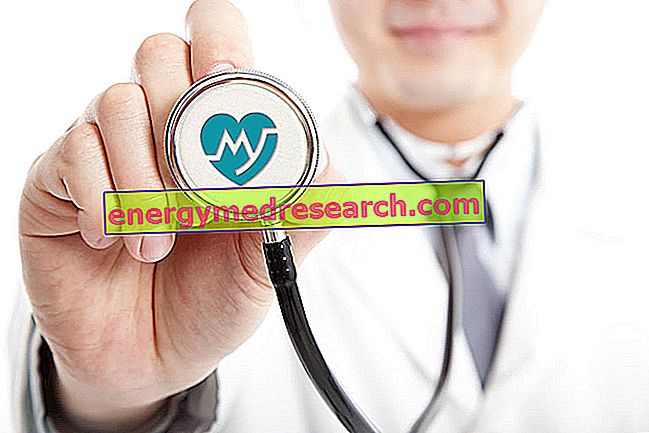Symptoms
If ovulatory symptoms do not occur or if you have irregular menstrual cycles, then ovulation may not occur every month.
The main symptoms associated with ovulation disorders are:
- irregularity of the menstrual cycle
- absence of menstruation (amenorrhea)
- lengthening of the natural rhythm of the menstrual cycle (oligomenorrhea)
- excessive and sudden weight loss
- abnormal or excessive growth of hair on body and face
- galactorrhea (secretion of milk from the nipples)
- obesity
- acne and hirsutism (abnormal or excessive growth of hair on body and face)
Oligo-ovulation and Anovulation
Ovulation disorders are classified as menstrual disorders, and include:
- Oligo-ovulation: it is infrequent or irregular ovulation, usually identified by the presence of cycles exceeding 36 days or numerically less than 8 cycles in a year.
- Anovulation : common cause of infertility, occurs when a woman has no ovulation. Other possible symptoms of anovulation are extremely short or long periods or a complete absence of menstruation. Anovulation is the absence of menstrual flow in a fertile age for a period of at least 3 months and usually manifests as irregularity in the menstrual cycle, understood as an unpredictable variability in duration, or quantity of menstrual flow. Anovulation can also cause the cessation of menstrual periods (secondary amenorrhea) or excessive bleeding (dysfunctional uterine bleeding). SYMPTOMS: in itself, anovulation is not associated with any physical symptoms, however in women who do not ovulate, cervical mucus tends to be non-regular, while in those with high androgen values, hirsutism may be present.
Classification
The World Health Organization (WHO) has developed the following classification of ovulatory disorders, based on: 1) prolactin level; 2) level of gonadotropins LH and FSH; 3) estrogen level
- GROUP I - Pituitary hypothalamic failure : Women with amenorrhea (absence of menstruation) and absence of signs of estrogen production, levels of prolactin within the limits, low levels of FSH, absence of signs of anatomical lesions of the hypothalamic-pituitary region.
- GROUP II - Dysfunctions involving hypothalamus and pituitary gland (most common cause): Women with various disorders of the menstrual cycle such as insufficiency of the luteal phase, anovulatory cycles, polycystic ovary syndrome, absence of menstruation, with the presence of estrogen production and normal levels of FSH and prolactin
- GROUP III - Ovarian failure (Ovarian failure) : Women with no menstruation, no signs of ovarian function, high levels of FSH, normal prolactin values
- GROUP IV: congenital or acquired alteration of the reproductive system : Women with no menstruation who do not respond to repeated cycles of estrogen
- GROUP V: Infertile women with hyperprolactinaemia and lesions in the hypothalamic-pituitary region : Women with various disorders of the cycle, high levels of prolactin and signs of lesions in the hypothalamic-pituitary region
- GROUP VI: Women with infertility, hyperprolactinaemia and absence of lesions in the hypothalamic-pituitary region : Women with various disorders of the cycle, high levels of prolactin, just as in group V but WITHOUT lesions in the hypothalamic-pituitary region.
- GROUP VII: Women with no menstruation, values within the limits of prolactin and signs of lesions in the hypothalamic-pituitary region : Women with low levels of estrogen and prolactin values within the limits
Causes
Some ovulation disorders can be determined by:
- Hyperprolactinaemia - Hyperprolactinemia is the presence of abnormally high levels of prolactin in the blood.
Prolactin is a peptide hormone produced by the pituitary gland, associated primarily with breastfeeding. Hyperprolactinemia can provoke the spontaneous production of breast milk and alterations of the normal menstrual cycle, thus reproducing the normal variations of the body during pregnancy and lactation (the majority of lactating women are in the absence of menstruation due to maculated ovulation) . When prolactin production increases outside this period, due to different causes, the ovulation processes are disturbed, even if menstruation maintains a normal rhythm. The classic signs of hyperprolactinemia are amenorrhea and galactorrhea. Hyperprolactinemia is often caused by diseases that affect the pituitary gland (for example due to the presence of small benign pituitary tumors, called adenomas).
- Polycystic ovary syndrome (PCOS) - Polycystic ovary syndrome (PCOS) is one of the most common female endocrine disorders. PCOS is a complex heterogeneous disorder that can cause various disorders: anovulation, resulting in menstrual irregularities or amenorrhea, appearance of ovarian cysts (hence the term polycystic ovary) and excessive amounts of androgenic hormones or amplification of their effects, causing acne and hirsutism; it is often associated with insulin resistance, obesity, type 2 diabetes and high cholesterol levels.
The symptoms and severity of the syndrome vary greatly among affected women.
- Endometriosis - Endometriosis is a pathological condition that affects the cells of the inner lining of the uterus (endometrium), which under normal conditions are subjected to monthly hormonal stimulation and flaking during menstruation. In the presence of endometriosis there is a proliferation of these endometrial cells outside the uterine cavity, more commonly on the peritoneum that covers the abdominal cavity and on the ovary, where the "menstrual" blood gathers in cysts, giving rise to reactions by of the organism that cause negative effects on the anatomy and physiology of the entire reproductive system. The main (but not universal) symptom of endometriosis is pelvic pain at various manifestations.
- Thyroid abnormalities
- Anomalies due to stress, weight loss, cushing syndrome, ovarian or adrenal tumors, hypothalamic tumors
Ovulation control
1) Ovulation induction
Ovulation induction is a promising assisted reproduction technology for patients with conditions such as polycystic ovary syndrome (PCOS) and oligomenorrhea (alteration of the rhythm of the menstrual cycle). It is also used in in vitro fertilization to bring the follicles to maturity before withdrawing the oocytes. Usually, ovarian stimulation is used in combination with ovulation induction to stimulate the formation of multiple oocytes.
With completed ovarian stimulation, a low dose of human chorionic gonadotropin (HCG), a hormone usually produced by the embryo immediately after implantation in the uterus, can be injected. Ovulation will occur between 24 and 36 hours after the HCG injection.
2) Ovulation suppression
Contraception suppresses ovulation events.
In fact, most hormonal contraceptives focus on the ovulatory phase of the menstrual cycle, because it is the most important period of time for fertility. Estradiol and progesterone, taken in various forms, including the use of combined oral contraceptives, mimic the hormonal levels of the menstrual cycle and exert a negative feedback control by turning off the folliculogenesis and ovulation.
Hormone therapy can therefore interfere positively or negatively with ovulation and can give women a sense of cycle control and fertility.



